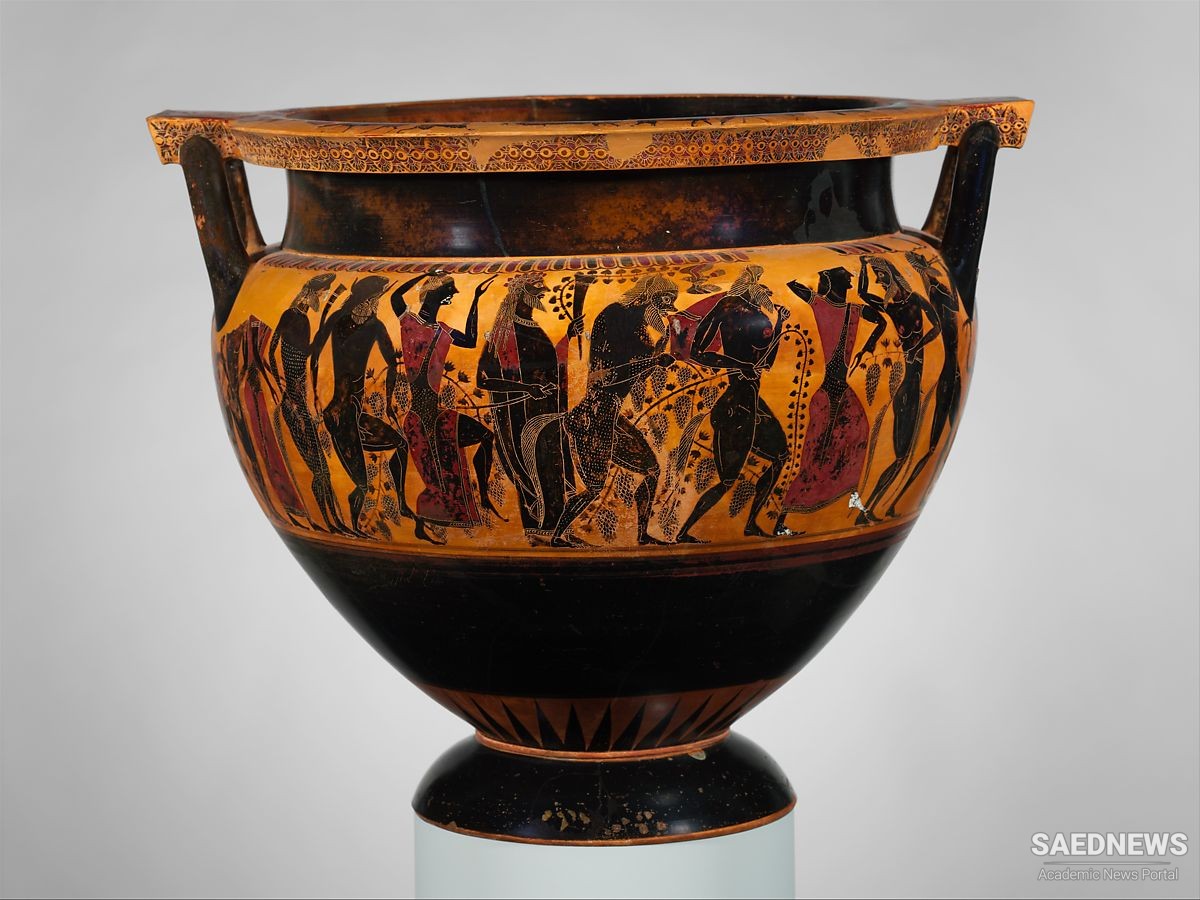DRUMS. Literary sources give at least twelve Sumerian words with their Akkadian equivalents which must be supposed to designate drums; some on account of the added determinative kuš or šu, ‘skin,’ as lilis, mesi, su gu galli and ub; some for other reasons, as a-lal, balag (formerly misinterpreted as a lyre), balag-du, balag-lul, dub, ub-tur, ub-zabar and a-da-pa. Some of these names are more or less anonymous; ub equals lilis; the term dub shares its ideogram with balag and therefore seems to be another name of the same object; mesi equals a-da-pa. Thus the number of terms is reduced to nine. If we take out balag-di, balag-lul, ub-tur, ub-zabar as composite terms which probably mean nothing but varieties in shape or size, we arrive at five types. Finally, su gu galli, signifying ‘the great bull’s hide,’ is obviously a poetic circumlocution and can be disregarded. This leaves no more than four drums to be identified.
Mesopotamian art works also show four, or perhaps five, types of drums. On an early vase from Bismya in the Istanbul Museum (c. 3000 B.C.), the third man in a procession, marching behind two harpists, seems to strike a rectangular frame drum squeezed under his left arm. But the object is not distinct enough to admit an authoritative interpretation. Apart from this doubtful frame drum, Mesopotamian art works show: 1) shallow or frame drums of all sizes; 2) a small cylindrical drum held in a horizontal position; 3) a large footed drum; and 4) a small drum with one head, carried vertically on a belt and struck with both hands. Only one of them appears on Sumerian art works of the third millennium B.C.—a gigantic drum which, standing on its side on the ground, reached up to the player’s neck or his face; that is, the skin was from five to six feet wide. It was indeed su gu galli, ‘the great bull’s hide.’ Big nails projected round about the circular head and the skins were nailed, as they are today in the Far East. In one case, on a green steatite vase in the Louvre, a small figure is set on the top of the drum, a rather unusual detail. (pls. IV b, c) In all cases two men strike simultaneously; this does not often occur elsewhere. They each strike on both sides; the drums must have had two skins.
The ancient artists did not represent either the second skin or the solid body which held the two skins together, and one is at a loss to know whether these instruments were frame drums, barrel drums or what. This question, however, can be settled. A barrel is usually at least as high as it is wide, which in this case was six feet. No player would be able to strike both skins of such a giant at once. Besides, the sculptors and painters of Sumer and Egypt represented their objects from their most characteristic side, regardless of perspective: a man’s head in profile, his trunk in full face, his legs in profile. Thus, a barrel-shaped drum would show its barrel, as it does in archaic Chinese sculpture—not its circular head; a frame drum, on the contrary, would be drawn as a circular head since its profile is a meaningless strip. Still, frame drums six feet wide are unknown. Two skins as large as that, properly stretched and vigorously struck, would demand a resistance that a simple frame could not afford.


 Practical Sides of the Evolution of Musical Instruments
Practical Sides of the Evolution of Musical Instruments














































